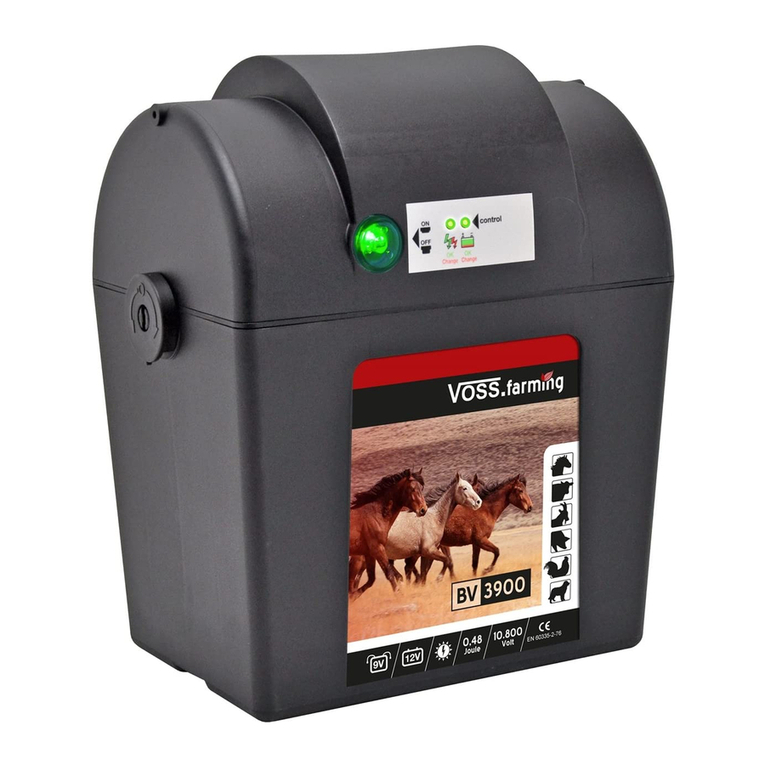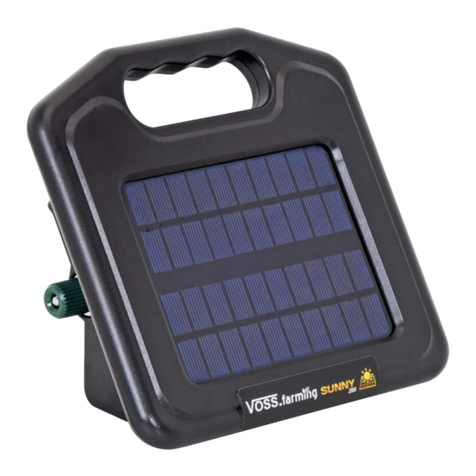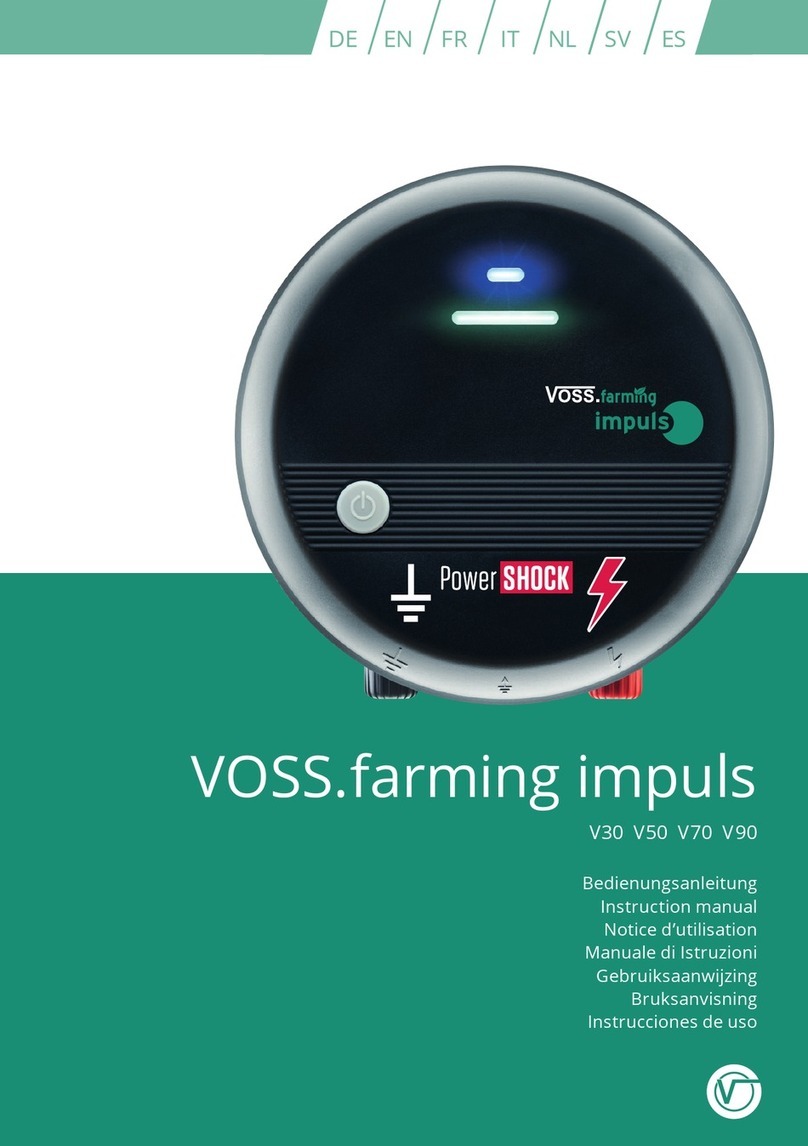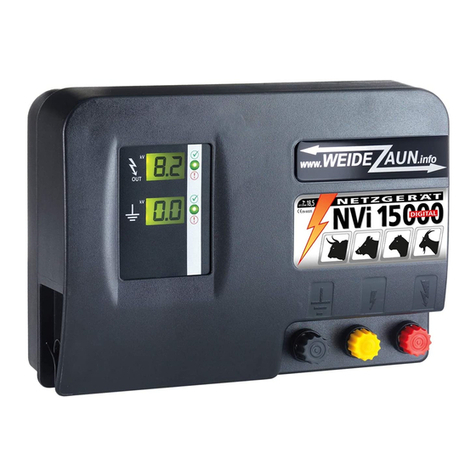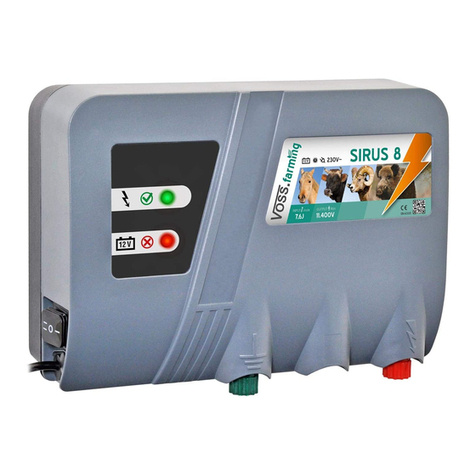
We recommend using the cable with item no. 33615 for connecting the grounding
posts. With optimal grounding, the VOSS.farming impuls duo can operate at its maxi-
mum capacity and ensure your fence provides the best possible security.
TIP: Where soil conditions are poor with low conductivity, we recommend using an ad-
ditional 2 or 3 grounding posts spaced about 2–3 m apart. If the soil is very dry or stony,
this will reduce its conductivity.
NOTE: Please choose a suitable location for your grounding system.
Your grounding system must be:
• at least 10 m away from other grounding systems, such as ground connections of
homes, telephone or power lines.
• away from animals or pathways as animals or people may damage the grounding.
• accessible to you at any time for maintenance purposes.
If you run any connection cables through the inside of buildings, you must always use
insulated high-voltage cables.
5. THE IDEAL FENCE
Regardless of the types of conducting material used in your fence, there are a few
things to keep in mind in order to ensure good conductivity.
• Keep your electric fence system free from vegetation. Do not run your fence through
hedges and avoid having any branches or bushes complete the circuit.
This will reduce the voltage on your fence and the shock strength of the electrical pulse
may no longer be powerful enough.
• Ensure that the conducting material in your fence does not touch the ground,
e.g. by sagging.
• Only use fence posts with insulators so as to insulate the conducting material from
the post and the ground. This will prevent any loss of voltage and ensure the desired
current ows through the conducting material of the fence.
Suitable accessories are available for using metal posts and industrial fences.
NOTE: It is a legal requirement to place warning signs on the fence in publicly accessible
areas, such as item no. 44735.






